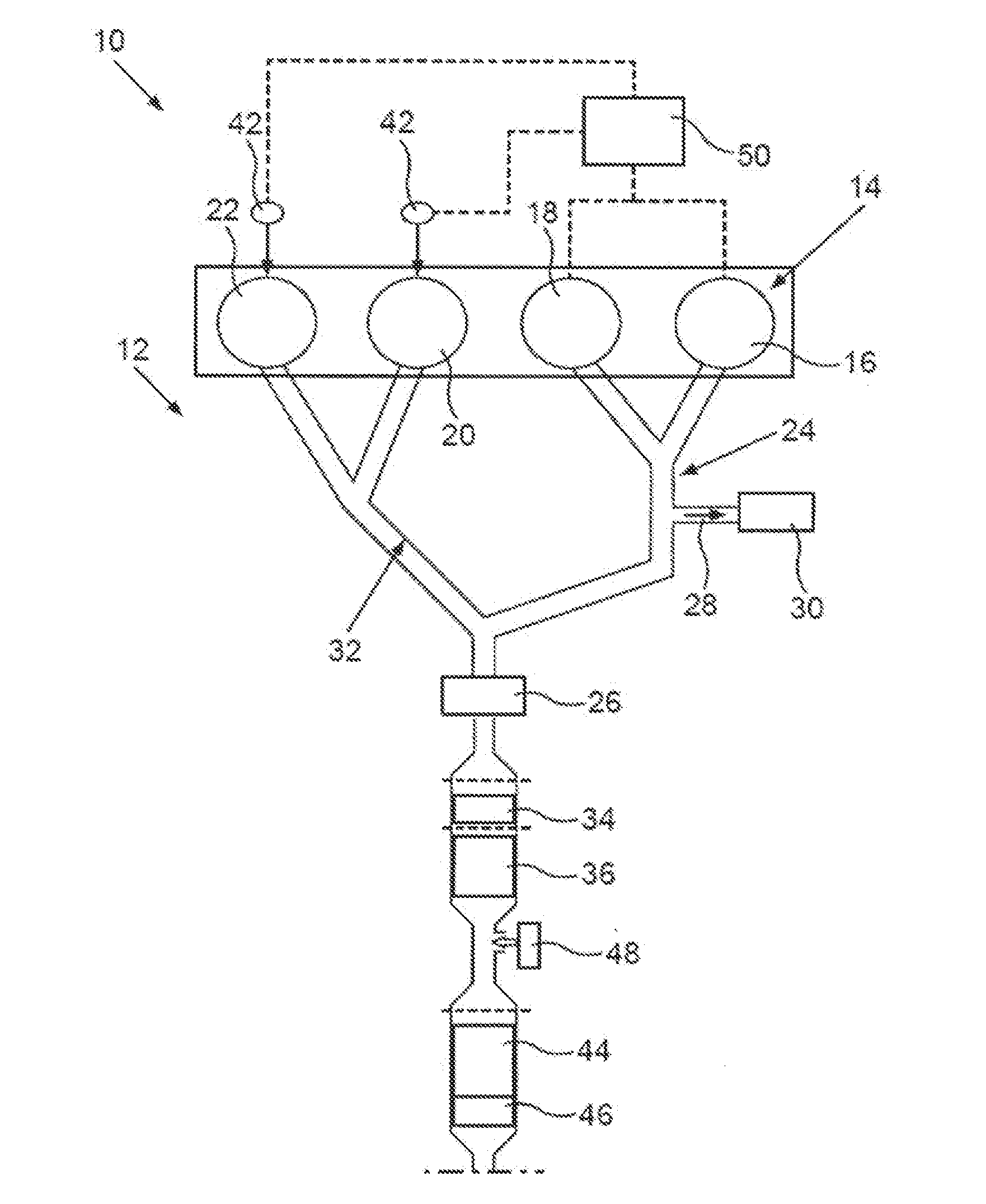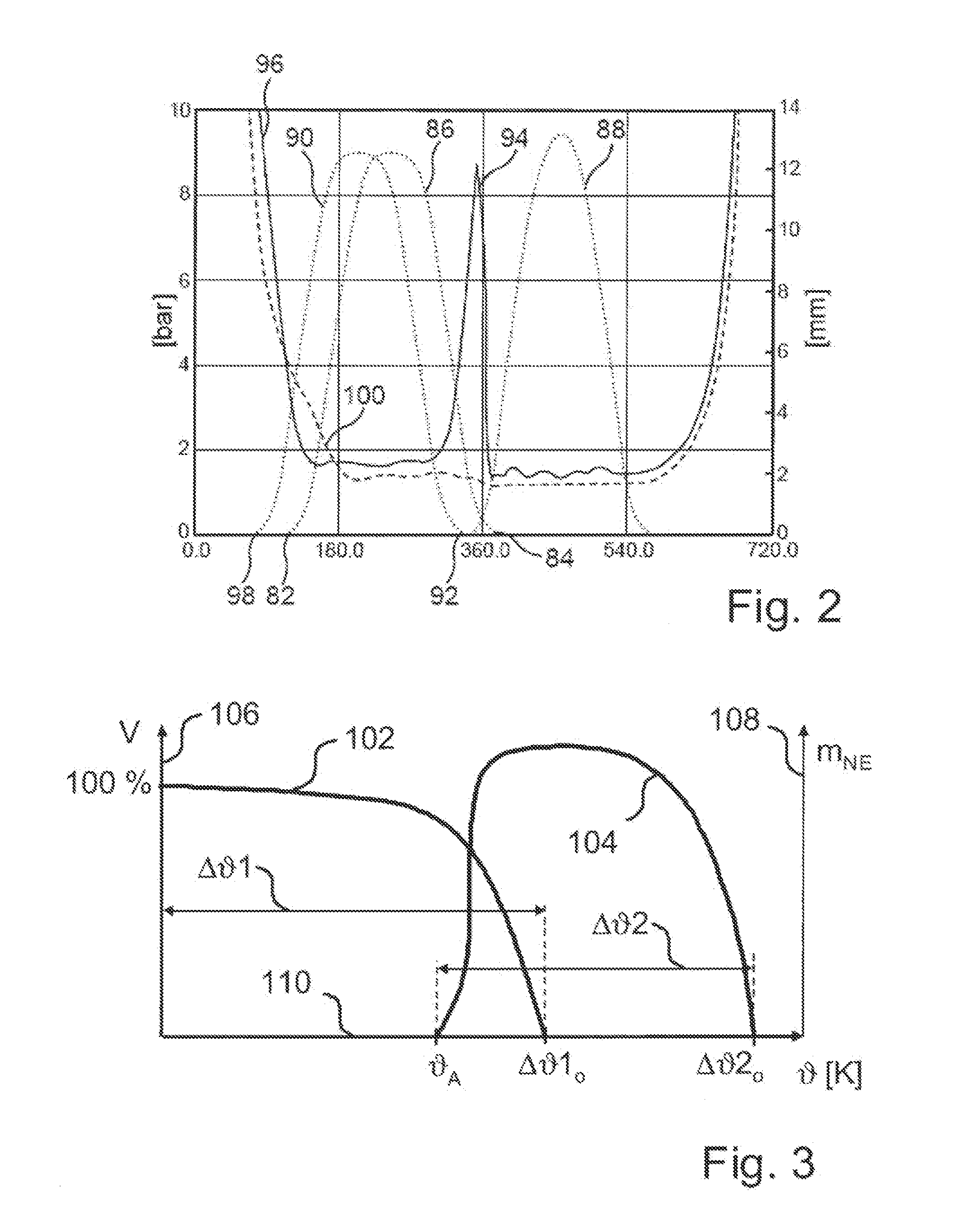Method for Operating an Internal Combustion Engine, and Internal Combustion Engine
- Summary
- Abstract
- Description
- Claims
- Application Information
AI Technical Summary
Benefits of technology
Problems solved by technology
Method used
Image
Examples
Embodiment Construction
[0051]FIG. 1 shows an arrangement 10 of an exhaust gas system 12 in an internal combustion engine 14, designed as a direct-injection 4-stroke diesel engine, of a vehicle, in particular a utility vehicle. The diesel engine 14 has four cylinders 16, 18, 20, 22 in the present case. A group of two (in the present case) first cylinders 16, 18 is fluidically coupled to a turbine 26 of an exhaust gas turbocharger via an exhaust gas line 24. An exhaust gas recirculation line 28 branches off from the exhaust gas line 24 into which the exhaust gas of the two first cylinders 16, 18 passes. The exhaust gas recirculation line 28 is designed as a high-pressure exhaust gas recirculation line in the present case; however, in addition a low-pressure exhaust gas recirculation may be provided. The quantity of exhaust gas recirculated into a feed air tract (not shown) of the internal combustion engine 14 may be set via an exhaust gas recirculation valve 30, which is shown only schematically.
[0052]The o...
PUM
 Login to View More
Login to View More Abstract
Description
Claims
Application Information
 Login to View More
Login to View More - R&D
- Intellectual Property
- Life Sciences
- Materials
- Tech Scout
- Unparalleled Data Quality
- Higher Quality Content
- 60% Fewer Hallucinations
Browse by: Latest US Patents, China's latest patents, Technical Efficacy Thesaurus, Application Domain, Technology Topic, Popular Technical Reports.
© 2025 PatSnap. All rights reserved.Legal|Privacy policy|Modern Slavery Act Transparency Statement|Sitemap|About US| Contact US: help@patsnap.com



